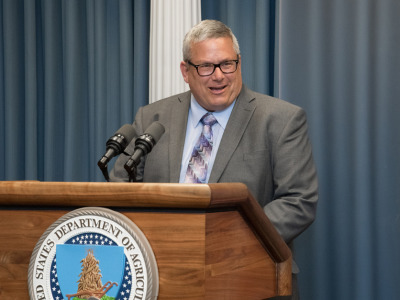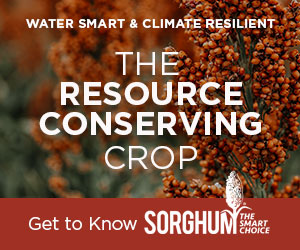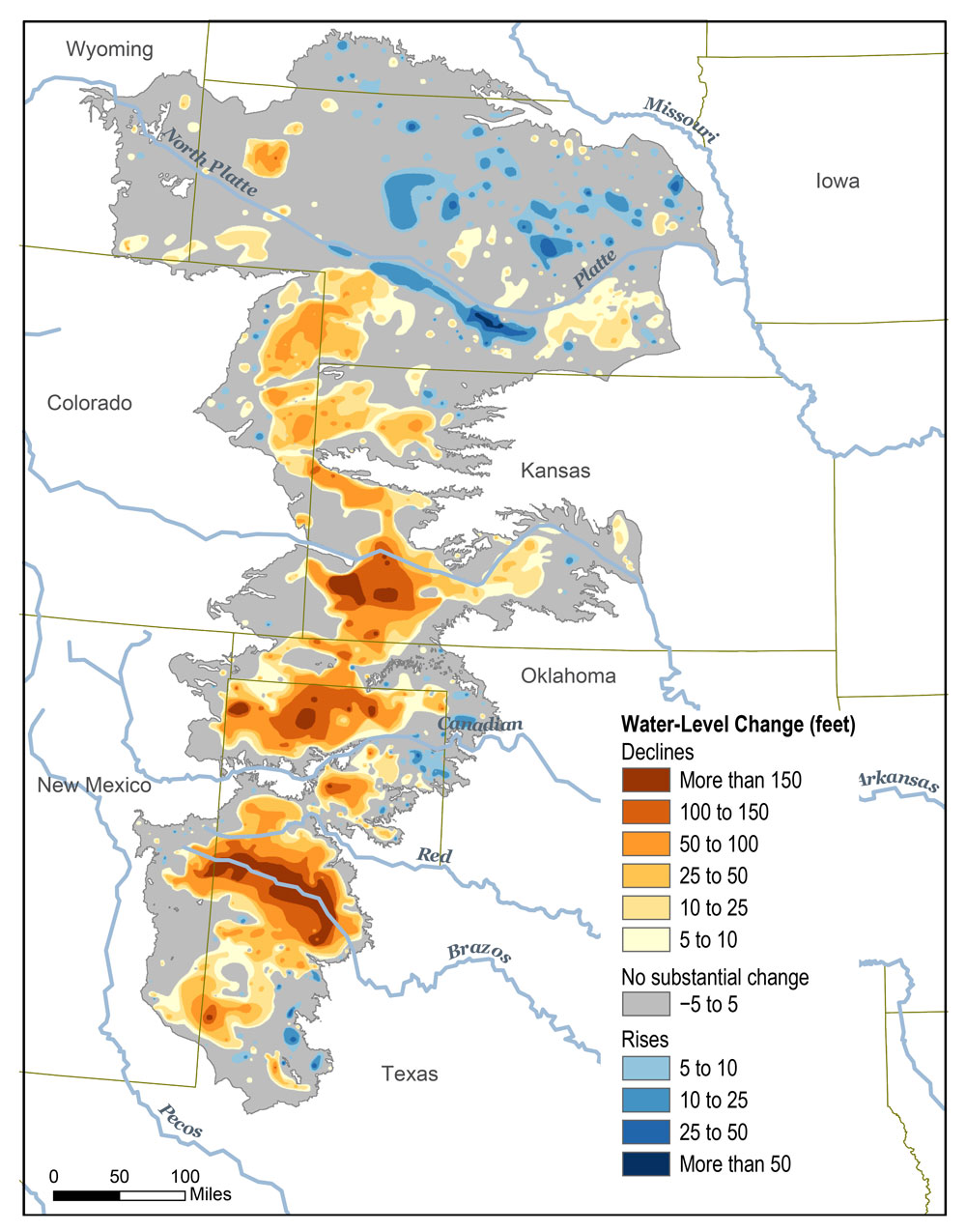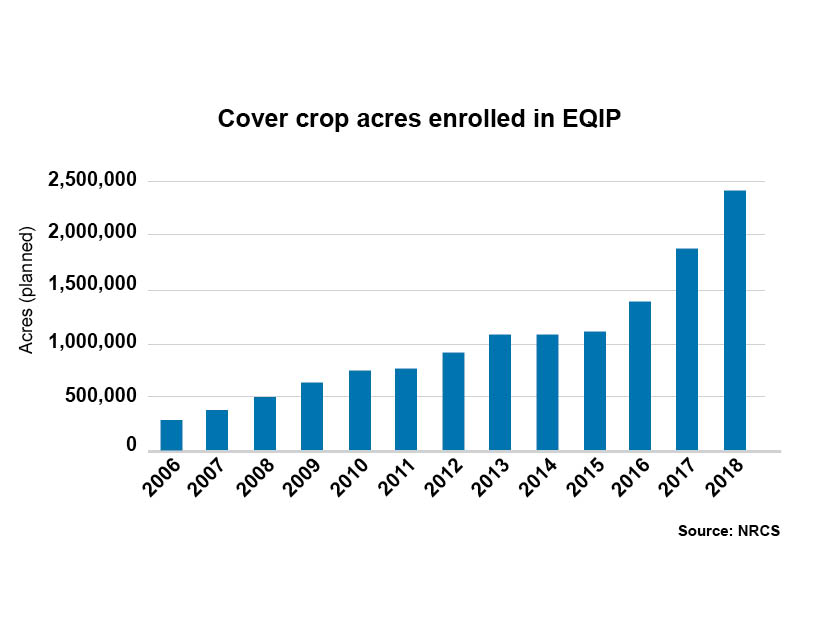In this installment:
-Payment plan raises fears of seed shortage, water misuse
-Cuts in crop insurance could further entice farmers
-More farm advisers seen as critical
The is the last of a four-part series on the promise and pitfalls associated with cover crops.
The Biden administration is betting big that farmers across the country can be enticed to start growing cover crops by the combination of direct payments and the development of carbon markets that could turn the conservation practice into a long-term source of revenue.
The $1.7 trillion Build Back Better bill that Democrats are vowing to enact in some form would authorize payments of $25 an acre over five years to farmers who plant cover crops.
The payments would would induce farmers to plant more than 50 million acres of cover crops by 2026, according to a Senate aide familiar with the Congressional Budget Office’s analysis of the plan. That would be three to four times as many acres currently reported to USDA.
The payments would help farmers scale up the practice and eventually qualify for new revenue streams from carbon credits or premiums for commodities such as corn that qualify as low-carbon.
The administration is simultaneously looking to accelerate through the development of those carbon markets and “climate-smart” commodities through funding for a series of pilot projects that will be announced next year. Among the ideas suggested to USDA is the use of cover crops and other conservation practices to lower the carbon footprint of corn that’s sold for fuel ethanol production. USDA is expected to release rules for project funding in the first quarter of 2022.
There are concerns that accelerating the use of cover crops with an infusion of government cash could lead to seed shortages and incentivize the overuse of limited irrigation water, all while providing no benefits to farmers in dry areas where there is too little water for both cover crops and cash crops like wheat.
 But Nick Smith, a farmer in central Iowa who has been planting cover crops for 10 years, is convinced it will take financial incentives to get many other producers who are dubious about trying the practice.
But Nick Smith, a farmer in central Iowa who has been planting cover crops for 10 years, is convinced it will take financial incentives to get many other producers who are dubious about trying the practice.
“We’re still like a tiny, tiny, tiny minority of people in the world that are doing” cover crops, Smith said.
“You don’t know if you don’t try, and lots of times the arguments you hear from farmers who are stuck in their ways are, ‘Well, why would I pay to put seed out there and then have to pay to kill it?’ So that’s where the mental roadblock is, and that’s where these programs can help get past that.”
The Senate staffer said the direct payment program would give farmers a more flexible alternative to trying to get funding through the oversubscribed farm bill conservation programs managed by USDA’s Natural Resources Conservation Service. “This is a way for folks to maybe dip their toes in the water,” the staffer said.
There also are proposals in development to further incentivize cover crops by reducing the cost of crop insurance based on data showing that the practice cuts the risk of growing corn and other cash crops.
The proposed cover crop payment program is estimated to cost $5 billion over a five-year period. Farmers could receive the $25 per acre payment on up to 1,000 acres, and if they don’t own their land, their landlords would qualify for an additional $5 per acre as an inducement to allow the practice. The median cost of planting and terminating cover crops is $37 an acre, according to the USDA-funded Sustainable Agriculture Research and Education program.
The Agriculture Department would write rules to determine eligibility for the program and the requirements for cover crops. USDA also would be responsible for verifying the cover crop acreage, something it could do with a separate $600 million account earmarked in the bill for “carbon sequestration and greenhouse gas emissions quantification,” according to the Senate aide.
The Build Back Better bill also would provide more than $20 billion in extra funding for the farm bill conservation programs, including the highly popular Environmental Quality Incentives Program. The funding could be used in part for cover crops as well as a range of other “climate-smart” measures, including feed additives that reduce methane emissions in cattle.
After recent revisions, the bill also addresses what cover crop advocates say is a critical need: advisers who can mentor farmers on the use of cover crops and other conservation practices. The bill would earmark $2.35 billion over 10 years for conservation technical assistance, roughly about what NRCS currently spends in one year.
Prospects for the bill in the 50-50 Senate are uncertain. Sen. Joe Manchin, a West Virginia Democrat whose vote is crucial to passing the bill, announced Sunday that he couldn't support the legislation, dooming the bill in its current form. Senate Majority Leader Chuck Schumer, D-N.Y., told colleagues on Monday that the Senate would vote on a revised version of the package early next year and keep "voting on it (the legislation) until we get something done." Manchin has not raised objections to the agriculture provisions, which are a relatively small part of the $1.7 trillion package.
Seed companies insist surge can be managed despite supply concerns
Jason Weller, a former chief of USDA's Natural Resources Conservation Service who now runs Truterra LLC, the ag sustainability arm of Land O’Lakes, warned at the American Seed Trade Association’s recent annual meeting that the demand for cover crop seed could outrun supply if the $25-per-acre payments are approved.
“If I had stock in cover crop seed production, I would be fine right now. I mean, it's holy smokes, the demand for seed is going to exceed supply. So there's gonna be a huge supply challenge,” he said.
A USDA spokesman told Agri-Pulse the department “is confident that it would have the ability to deliver (the) payment program and would engage with the seed industry and other stakeholders at the appropriate time as it would with any new program.”
Officials with leading seed producers say the demand should be manageable and that rye and oats could be harvested for seed to accommodate a sharp increase in demand.
Farmers currently harvest about 1 million of the 3 million acres of oats they grow in a typical year, and 300,000 of the 2 million acres of rye. The rest of those crops are typically used for livestock forage. Harvesting an additional 10% of those crops — 300,000 acres of oats, and 200,000 acres of rye — could produce enough seed for 20 million acres of cover crops, said Jared Knock, head of business development for South Dakota-based Millborn Seeds
“These would be two of the biggest bucket species used for covers, but keep in mind that we use more than 100 species of crops as cover crop ingredients, so if certain individual species are in short supply for the season, we can easily make replacements,” said Knock.
Bill Northey, who served as USDA’s undersecretary for farm production and conservation during the Trump administration, believes that if farmers know far enough in advance that more seed is needed they could declare their rye cover crop as a cash crop for crop insurance purposes, harvest the rye in June, and then plant soybeans. While the soybean yield may be reduced, the value of the rye seed could make up for the lost revenue.
“Eighty bushels of rye on a good stand, plus half a crop of soybeans, is going to be worth more than a full crop of soybeans,” Northey said.
 Former USDA Undersecretary Bill NortheyBut one of the challenges that seed companies and farmers would face is how much advance notice they would get of a surge in cover crop acreage.
Former USDA Undersecretary Bill NortheyBut one of the challenges that seed companies and farmers would face is how much advance notice they would get of a surge in cover crop acreage.The American Seed Trade Association has been talking to USDA about surveying farmers on cover crop intentions each year, something the National Agricultural Statistics Service now does every March for corn, soybeans, wheat and other spring-planted cash crops.
But a cover crop intentions survey would ideally be done the previous fall and winter to give seed companies the information they need, said LaCrosse Seeds President Dan Foor, who chairs an ASTA’s sustainability working group.
Even with an early warning of farmers’ plans, weather also will continue to be a factor in demand for seed. “If the fall is conducive to planting then obviously we see more acres (of cover crops) planted,” Foor said.
Knock downplayed concerns that the need for cover crop seed production would have a significant impact on acreage for corn or soybeans. Citing data from GO Seed Inc. in Oregon, Knock said producing enough rye, turnip, radish, and clover seed to plant cover crops on every acre of the U.S. corn crop (more than 90 million acres in total) would require just 350,000 acres of seed production.
In his ASTA remarks, Weller also cautioned against relying excessively on cover crops to address sustainability goals, including reducing greenhouse gas emissions.
“Too often we lean on a single silver bullet of a cover crop and expecting cereal rye to be the savior; that’s not going to happen,” he said. "What you need is a holistic agronomy solution.”
That, he said, will include conservation tillage as well as improved breeding of cash crops.
Wheat and sorghum growers: Don’t leave us out
Farmers in drier areas of the country, including the western Plains and the Pacific Northwest, often say cover crops don’t work for them because of the valuable soil moisture that they consume, but those producers also fear being left out of a surge of funding that’s directed to cover crops. Wheat and sorghum are popular crops in areas with limited rainfall.
Don Hineman farms near Dighton, Kansas, where he sees just 19 inches of rain annually. He tried cover crops from 2012 to 2014 but gave up on the practice and told Agri-Pulse it doesn’t make sense for the government to promote the practice in that region.
“They’re misguided if they're going to push them for semiarid areas like we live in out here,” Hineman said. “Frankly our best sort of cover crop out here is standing wheat stubble … We absolutely see an increase in yields for corn and milo (sorghum) when we plant into standing wheat stubble.”
Winter wheat is typically growing at the same time as cover crops but doesn’t count as a cover crop if it’s harvested.
Chandler Goule, CEO of the National Association of Wheat Growers, said he is concerned about the “optics” in the future for the wheat industry when reports come back that wheat growers are growing far fewer cover crops than producers of other commodities.
He said it’s often difficult for wheat growers to show enough environmental benefits from their practices to qualify for payments under the Conservation Stewardship Program, which has been one of USDA’s two main ways of funding cover crops and other climate-related practices.
 Tim Lust, CEO of National Sorghum Producers, says planting sorghum or leaving wheat or sorghum stubble on fields can serve a similar purpose to cover crops, including protecting the soil from wind erosion. Like Goule, he said the $25-per-acre payments would do little to help his members.
Tim Lust, CEO of National Sorghum Producers, says planting sorghum or leaving wheat or sorghum stubble on fields can serve a similar purpose to cover crops, including protecting the soil from wind erosion. Like Goule, he said the $25-per-acre payments would do little to help his members.
“We are interested in creative solutions to how incentives can help our members implement the climate-smart practices that fit their environment,” he said.
Farmers planted 44.5 million acres of wheat in 2021, including 30.5 million acres of winter varieties, and 5.9 million acres of sorghum. By comparison, farmers typically grow about 180 million combined acres of corn and soybeans annually.
Incentives raise water concerns on southern Plains
According to USDA data, one of the most popular places in the country for cover crops is the Texas panhandle where they can protect the land from wind erosion as well as sequester carbon. But some farmers irrigate the cover crops with water for the Ogallala Aquifer, which is critical to agriculture for a significant portion of the western Plains.
Farmers in much of the region have been using water from the Ogallala faster than it is replenished. While water levels in the aquifer have risen in some areas, especially Nebraska, they are "mostly in decline, namely from Kansas southward," according to the National Oceanic and Atmospheric Administration.
Looking for the best, most comprehensive and balanced news source in agriculture? Our Agri-Pulse editors don't miss a beat! Sign up for a free month-long subscription by clicking here.
 Ogallala Aquifer depletion (photo: NOAA)
Ogallala Aquifer depletion (photo: NOAA)
The Fourth National Climate Assessment warned, "Current extraction for irrigation far exceeds recharge in this aquifer, and climate change places additional pressure on this critical water resource," the report said.
“Once that water is gone, it’s gone,” said Barry Evans, a cotton grower near Kress in the Texas panhandle. Paying farmers to grower cover crops that require irrigation could “create some unintended consequences and actually speed decline of our aquifer,” he said.
Shawn Wade, director of policy analysis and research for Plains Cotton Growers, acknowledged that growing cover crops is a “balancing act” for the region’s farmers.
Still, he said cover crops provide important environmental benefits and that a $25-an-acre payment would help cover the cost. “Because there's plenty of other things that can go wrong out here ... it’s nice to have that level of investment and encouragement to do those things,” he said.
Rick Kellison, project director for the Texas Tech University-based Texas Alliance for Water Conservation, believes it’s premature to know how much impact a $25-per-acre payment would have on water demand, but he said a significant increase in irrigated cover crops could pose a challenge for underground water supplies.
Crop insurance barriers remain; group claims data to justify policy improvement
In the past, the federal crop insurance program has been widely viewed as an impediment to the adoption of cover crops. That perception is fading with changes in rules and guidance from USDA’s Risk Management Agency and research that has pulled together USDA and private data on the impact of cover crops on the productivity of cash crops.
There are still some barriers to cover crop adoption left — the coverage isn’t available for harvestable cover crops, including some intended for biofuel feedstocks, and some agronomic practices can affect coverage.
But temporary new premium subsidies for cover crops are easing the cost of cover crop adoption, and a data-based proposal is coming in 2022 that could lead to reductions in insurance costs for farmers who use cover crops.
What’s fixed: For many years, farmers complained that RMA’s termination guidelines for cover crops were too strict and that farmers were required to get preapproval for deviating from the guidelines to protect the insurability of the cash crop that followed.
Congress enacted a provision to address that complaint in the 2018 farm bill, and RMA subsequently issued updated guidelines clarifying that farmers could insure the cash crop at planting and that the farmers’ cover crop management would be reviewed under normal RMA rules for good farming practices. The RMA rules come into play when an insurer questions whether a farmer is entitled to an indemnity for a loss on the cash crop.
RMA’s updated guidelines make clear that they don’t “function as a substitute for locally adaptive management for cover crop termination timing, but rather serve as but one option available to producers,” according to the National Sustainable Agriculture Coalition, which advocated for the fix.
This year, USDA also removed a barrier to planting cover crops during years when farmers are unable to plant their cash crops. Until now, farmers who cut their cover crops for hay or grazed cattle on them before Nov. 1 lost 65% of their prevent-plant insurance payment. On Dec. 1, RMA announced it was permanently removing the Nov. 1 restriction and accompanying penalty.
Insurance barriers remain: USDA is required by law to ensure that crop insurance is actuarially sound, so there are additional barriers linked to concerns about the impact that some practices associated with cover crops could affect the yields of insured crops.
Cover crops that are harvested typically can’t be insured, and harvesting a cover crop also can create issues with insuring the cash crop that follows.
Rye, for example, is insurable in some states but not in places such as Iowa, where there has been one of the most aggressive pushes for cover crop adoption to address the state’s water quality issues.
 For the most part, cover crops that are grown for biofuels aren’t insurable either. One prominent exception is camelina, which can be covered by crop insurance under a pilot program in Montana and northwest North Dakota.
For the most part, cover crops that are grown for biofuels aren’t insurable either. One prominent exception is camelina, which can be covered by crop insurance under a pilot program in Montana and northwest North Dakota.
CoverCress Inc., a St. Louis-based company that has developed a version of pennycress that can be harvested for biofuels, plans to insure the crops grown by contract farmers.
But there could be questions about the insurability of the crops that follow the harvested cover crops, depending on the rules for the particular county where the producer farms, according to a statement to Agri-Pulse from RMA: “Producers should always talk to their insurance agent about what is an insurable crop and practice for their specific county.”
Another issue that depends on rules for the farmer’s location are restrictions on “relay cropping,” the practice of seeding one crop into another that hasn’t been harvested. Some farmers are seeding soybeans into their rye cover crop and then harvesting the rye over the young soybeans, said Sarah Carlson, strategic initiatives director for Practical Farmers of Iowa and a leading expert on cover crops.
While relay cropping can reduce the soybean yields, the rye suppresses weeds and the grain can be used for seed, offsetting the cost of producing the rye, said Carlson.
But because harvested cover crops are no longer cover crops under USDA regulations, the relay cropping may fall under rules for double cropping for purposes of crop insurance, RMA says.
Noah Wendt, who farms in central Iowa, expressed frustration that his relay-cropped soybeans can’t be insured, but he thinks RMA will come around as the agency sees more data.
“I sell crop insurance and that's one of the things that makes me mad because we couldn't insure that field for the beans for our cash crop, and they're probably going to do just as good as the rest of the beans anyhow,” he said.
What’s coming: A $5-an-acre premium subsidy that the Biden administration created for 2021, using coronavirus relief funds, could be repeated in 2022. USDA has listed the program on its regulatory agenda for 2022, but it’s not clear how a new round of assistance would be funded.
USDA provided $59.4 million in assistance to farmers in 2021 on about 12 million acres of cover crops. To be eligible, farmers had to certify their cover crop acreage with the Farm Service Agency; FSA reported about 14 million acres this year, 2 more acres than the acreage farmers claimed the premium assistance for, according to an analysis by the Senate Agriculture Committee.
“It really cheapened our crop insurance up a lot this year. I think we saved $5,000,” said Wendt.
That program was modeled after state programs in Iowa, Illinois and Indiana.
The bigger goal of cover crop advocates has been to make the case to RMA that cover crops and other practices such as conservation tillage could actually reduce the risk of crop losses.
That won't be easy, according to Northey, the former USDA undersecretary. He said it's much easier to track corn and soybean yields than it is to gauge the impact of cover crops on the production of cash crops. The impact on risk could be "very small."
But one group, the AGree Environmental and Economic Risk Coalition, believes it has produced the evidence using USDA and private data to make the case to the department that cover crops reduce crop risk.
AGree, which worked with a private firm and farm groups to get approval this year from USDA for a policy endorsement for farmers who use split nitrogen applications, expects to apply to USDA in 2022 for approval of a product related to cover crops, said Deb Atwood, AGree’s executive director.
“The amount of data that’s used is extraordinary,” she told Agri-Pulse. She didn’t disclose any details of what the group would submit to USDA under its Section 508 process for private insurance plans. But when asked if AGree has the data to prove that cover crops reduce crop risk, she said, “Yes, we do.”
Separately, the University of Illinois is expected to report this spring on research that used data from USDA and an outside source to determine how the use of cover crops and conservation tillage affected planting in the Midwest 2019, a year when the spring was marked by exceptional flooding. The data is being analyzed to assess how the conservation practices whether and when crops could be planted and what impact the practices had on crop yields.
The study required linking records from three USDA agencies — RMA, NRCS and FSA — with detailed weather data compiled by the PRISM Climate Group at Oregon State University. The results will be used to advise farmers on cover crop and tillage practices, said Atwood.
The study is being carried out under an agreement between the Meridian Institute, the host organization for AGree, USDA and the university.
Wanted: More advisers for farmers
Getting many farmers to undertake a fundamentally new practice isn’t easy, says Lee Briese, a certified crop adviser and cover crop consultant in North Dakota.
“They'll try things, but if it fails miserably, you've probably put a hold on that practice for a generation,” Briese told Agri-Pulse. "Because when your yearly paycheck revolves around decisions you make, you get to be pretty risk-averse on taking big chances.”
 That’s why advocates of cover crops say it’s vital to connect farmers to mentors and advisers who can help them learn how to manage the practice in a way that’s suited to their area and cropping systems.
That’s why advocates of cover crops say it’s vital to connect farmers to mentors and advisers who can help them learn how to manage the practice in a way that’s suited to their area and cropping systems.
“Cover crops is a big change in an operation … the return on investment from doing cover crops can be one year, it can be 20 years,” said Margaret Henry, sustainable agriculture director for PepsiCo Inc., which contracts with Practical Farmers of Iowa to advise farmers who the company pays to plant cover crops.
The $2.35 billion earmarked in the Build Back Better bill would help NRCS hire additional staff, but also could fund advisers through conservation districts and private organizations such as PFI.
“Conservation technical assistance is the critical element in providing highly trained and skilled professionals to build capacity and work within communities to address the impacts of a changing climate,” said Jeremy Peters, executive director of the National Association of Conservation Districts.
NRCS is the second-largest agency at USDA with about 11,000 employees, 10,000 of whom work in NRCS field offices. The agency didn't respond to questions about how many of its staff can currently provide technical assistance. The National Farmers Union, appealing earlier this year for an increase in NRCS assistance, said that the agency had 1,200 vacancies at one point in 2020.
NRCS also certifies employees of private businesses, nonprofit organizations and state and local governments to serve as “technical service providers” to help farmers and landowners apply for conservation programs. About 1,250 individuals and about 100 businesses are certified as TSPs.
Underfunded conservation programs underpin progress to date
About one-third of the acreage planted with cover crops in 2018 received a financial assistance payment from either federal, state, or other programs that support cover crop adoption, according to a study by USDA’s Economic Research Service.
Jay Baxter, who farms near Georgetown, Delaware, said federal programs are especially helpful to farmers who are on the fence about a practice such as cover cropping. They may be deterred by the financial risk or the added expense of “crop seed or hiring someone to do the application or hiring another person to plant in the fall,” he said.
But the programs are chronically underfunded, including EQIP, which provides cost-share assistance for new equipment and practices, and the Conservation Stewardship Program, which can provide annual payments under five-year contracts to producers who undertake conservation practices.

Citing USDA data, the Environmental Working Group, a research and advocacy group, said there is a $2 billion unfunded backlog for conservation programs, including EQIP and CSP. Some 87,000 farmers this year with valid EQIP applications couldn't get funding, the group said.
Under EQIP, producers can get funding for cover crops in fields in which they don't grow them already. Cover crops can be included in an EQIP contract for a maximum of five years on the same field and farmers who receive EQIP payments cannot harvest their cover crop for grain or seed. In certain states, they may be allowed hay or graze the cover crop to feed it to their livestock.
Cover crops are the top practice funded by EQIP. Cover crop acreage funded through EQIP quadrupled between 2006 and 2016 from 240,418 acres to 1,120,311 acres, according to ERS. EQIP funding for cover crops increased tenfold.
Payments under EQIP vary based on the state, according to the ERS report. For example, in the 2017 fiscal year, the median per-acre payment for the program in Illinois was $62.33, while the payment for Delaware’s program was $92.27.
The report also states that funding for cover crops through EQIP has increased from $7 million in 2005 to over $155 million in 2018.
In 2019, the Trump administration was pushed to make some changes in EQIP that would further incentivize cover crops, including by easing limitations on grazing cover crops for soil health and wildlife benefits. USDA didn’t go as far as cover crop advocates wanted, but the department left the door open to considering further changes to the EQIP regulations.
Under CSP, producers who are already planting cover crops could be eligible through the program to shift to enhanced cover crop systems, plant more diverse mixes or focus on targeting a certain environmental benefit, according to the ERS report.
The total cover crop acreage receiving CSP payments increased from more than 350,000 acres in 2010 to over 2 million acres in 2015, according to ERS.
Clay Pope, a farmer near Loyal, Oklahoma, who has participated in CSP, cautions that it’s going to take time to shift more growers into practices such as cover crops.
“You can’t turn an aircraft carrier on a dime," he said. "So giving the help to allow people to make those adjustments, to figure these things out, to sort through how you can benefit … I think that’s a huge piece of it.”
For more news, go to Agri-Pulse.com.



